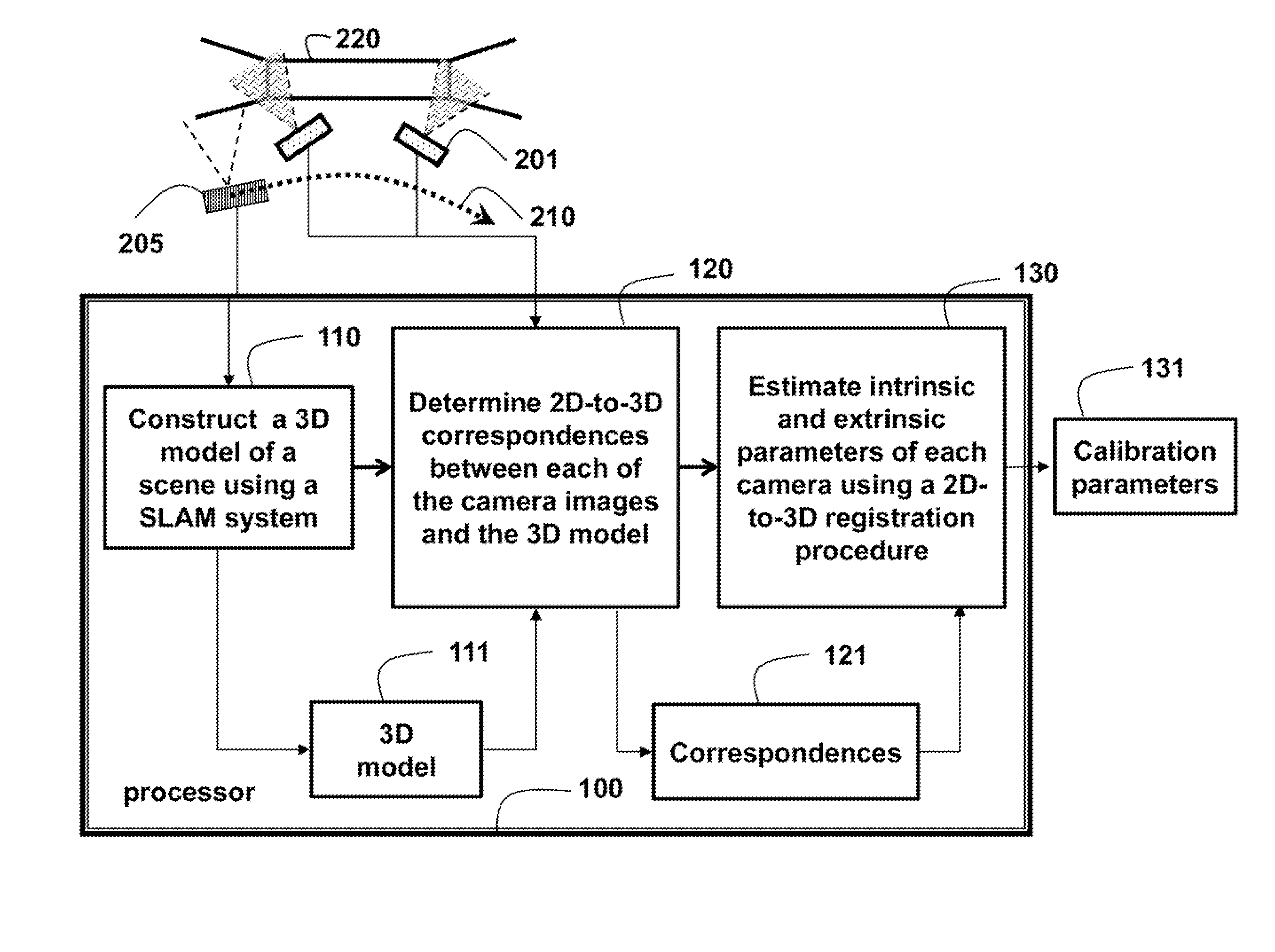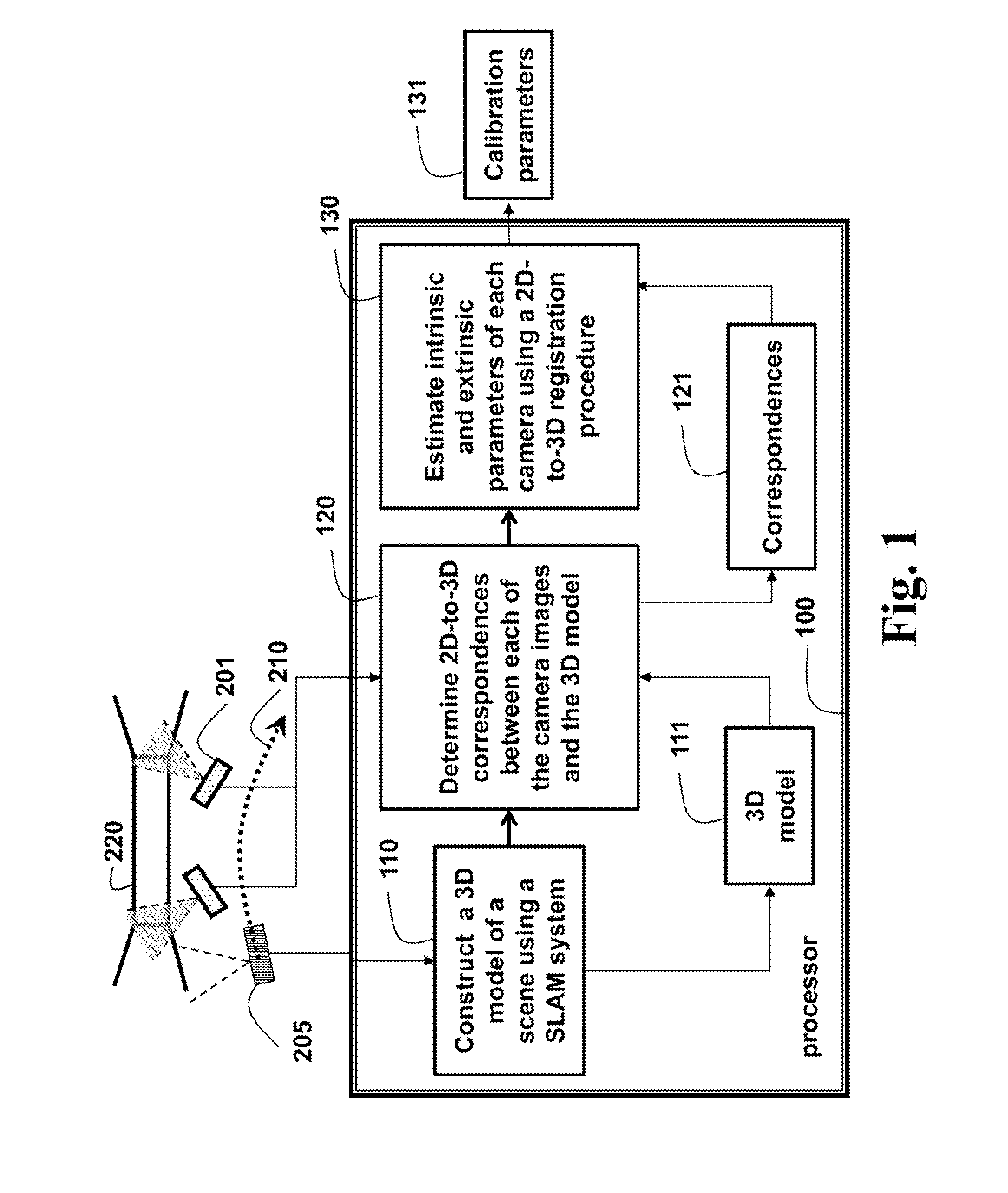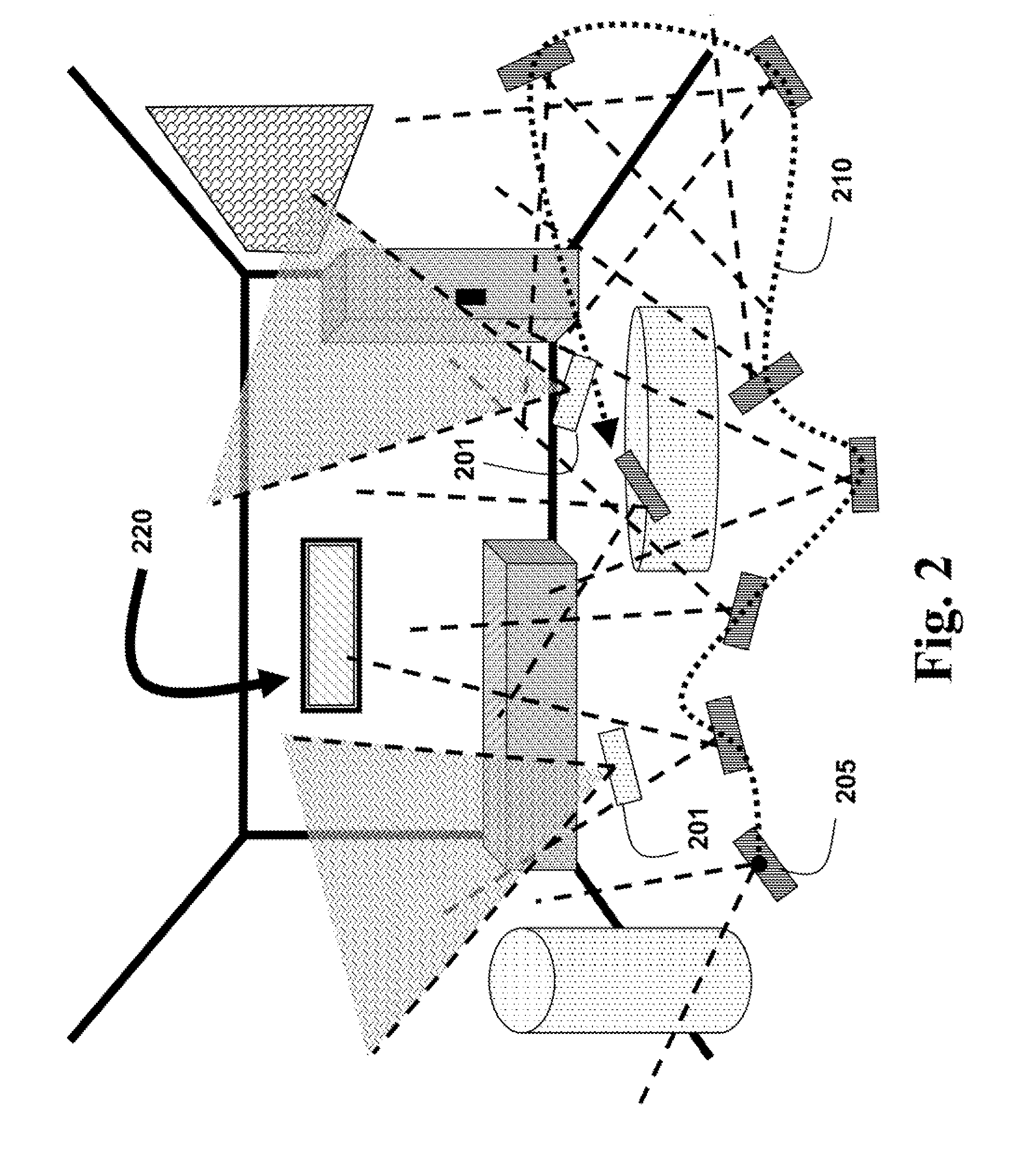Method for Calibrating Cameras with Non-Overlapping Views
a non-overlapping view and camera technology, applied in the field of cameras, can solve the problems of limited accuracy, inapplicability to stationary cameras, and methods that cannot determine all the 6 degrees of freedom (dof) of poses, and achieve the effect of fewer degeneracy problems
- Summary
- Abstract
- Description
- Claims
- Application Information
AI Technical Summary
Benefits of technology
Problems solved by technology
Method used
Image
Examples
Embodiment Construction
[0012]FIGS. 1 and 2 show a method for calibrating one or more cameras 201 with non-overlapping views of a scene 220 according to embodiments of our invention. The method determines intrinsic and extrinsic camera calibration parameters. The intrinsic parameters include, e.g., focal length, and radial distortion parameters of the camera. The extrinsic parameters include the poses, including 3D translation and 3D rotation, of the cameras.
[0013]A three-dimensional (3D) model 111 of the scene is constructed 110 using a simultaneous localization and mapping (SLAM) procedure. A calibration camera 205 used by the SLAM procedure is independent of the one or more cameras 201 to be calibrated. Correspondences 121 between images acquired by the one or more cameras 201 and the 3D model are determined 120. Then, intrinsic and extrinsic calibration parameters 131 are determined using a 2D-to-3D registration procedure 130.
[0014]The method can be performed in a processor 100 connected to memory and ...
PUM
 Login to View More
Login to View More Abstract
Description
Claims
Application Information
 Login to View More
Login to View More - R&D
- Intellectual Property
- Life Sciences
- Materials
- Tech Scout
- Unparalleled Data Quality
- Higher Quality Content
- 60% Fewer Hallucinations
Browse by: Latest US Patents, China's latest patents, Technical Efficacy Thesaurus, Application Domain, Technology Topic, Popular Technical Reports.
© 2025 PatSnap. All rights reserved.Legal|Privacy policy|Modern Slavery Act Transparency Statement|Sitemap|About US| Contact US: help@patsnap.com



